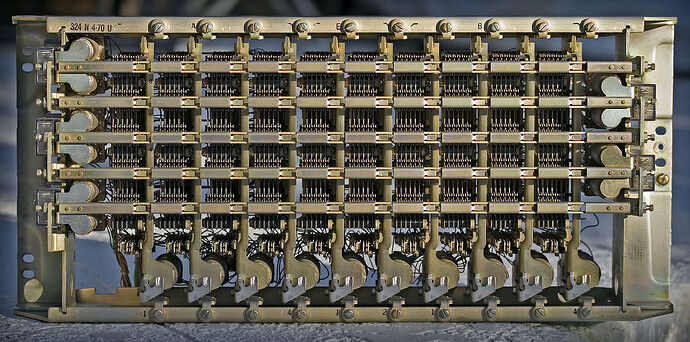Hello Ravi
When you are planning to design a network that is that large, then we are talking about large scale datacenter network design. Things that will affect your configuration include:
- what kind of bandwidths are required by each server?
- are they physical servers or virtual servers?
- what is the physical topology of your network (racks, power, internet connection, all of which depend on numbers 1 and 2)
- a top of rack architecture should be employed for such a large network.
- network design automation such as Cisco DNA should also be considered
These resources will help you out to further understand such large scale design needs.
A Clos network is a theoretical ideal network for circuit switching. Back in the days of switched networks, such as the traditional telephony network, they used what is known as a crossbar switch. This is a collection of switches that are arranged in a matrix formation that has multiple input and output lines that form a crossed pattern. Any of the inputs could be connected to any of the outputs by closing a switch located at the appropriate intersection. Here is an example of such a device from the 1950s with 100 cross points:
A Clos network allowed for the maximum capacity of a switched network with a minimum number of crosspoints by adding intermediate crosspoints in stages. If you want to read more about it, do a search using your favorite search engine. Now a Clos network is still relevant today, but from a different perspective: Bandwidth consolidation. This allows for bandwidth from multiple sources to be consolidated (from the access layer of a network towards the core layer) into as few paths as possible, reducing costs and increasing efficiency. Over-subscription in this context refers to a point of bandwidth consolidation where the ingress bandwidth is greater than the egress bandwidth. Traffic statistics have shown that in a multi-tiered network design, the total size of the uplink does not need to be the sum of the total amount of the downstream links. This oversubscription ratio for access downlink to access uplink is typically at 20:1 where distribution layer downlink to uplink ratios are somewhere around 4:1.
Actually, you can, but it’s not recommended. Take a look at this post:
ECMP is equal cost multipath routing. This just means that if there is an equal cost to a specific destination, both paths are available to packets, either as load balancing options or as alternatives in the case of failure of one of the paths. More information about ECMP (at least for OSPF) can be found in this lesson:
I hope this has been helpful!
Laz
